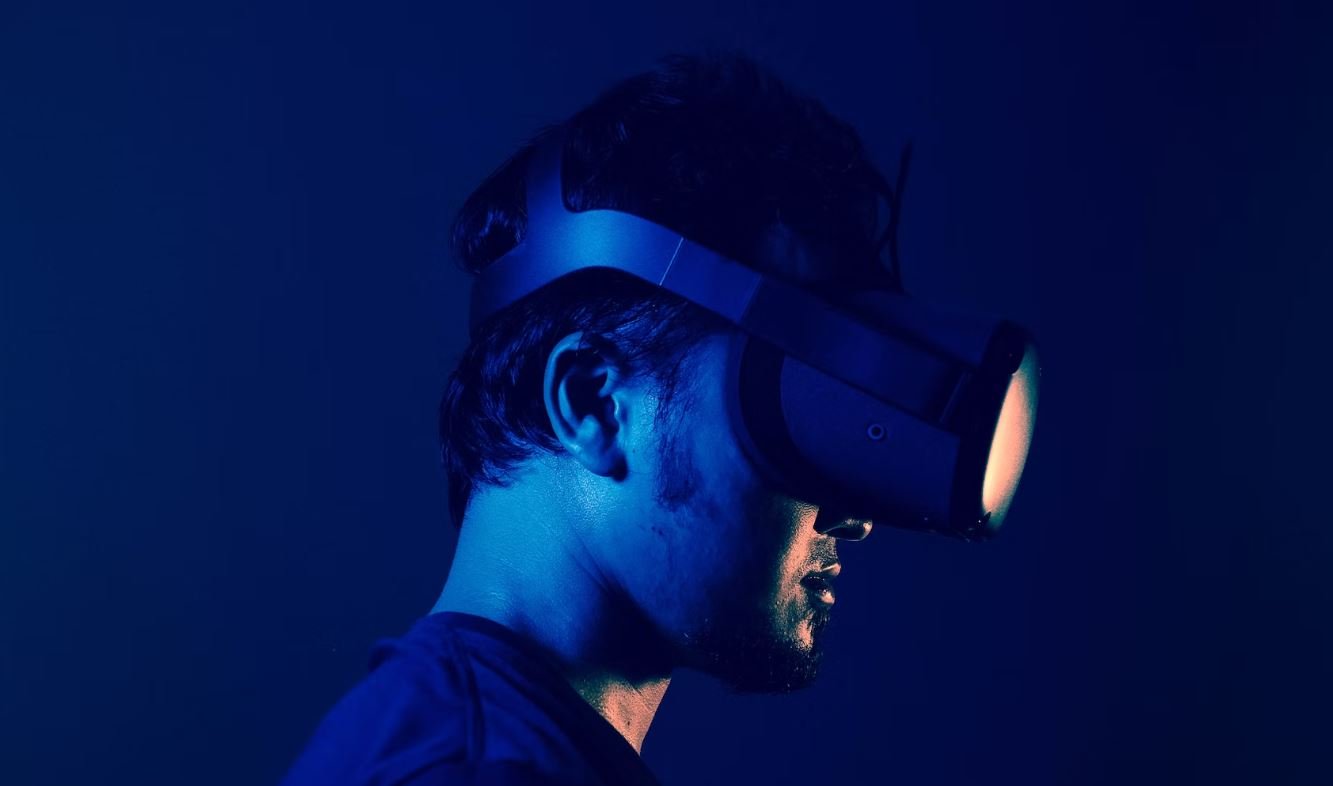Deep Learning OCR
Optical Character Recognition (OCR) technology has revolutionized the way we convert written or printed text into digital formats. Traditional OCR methods were limited in accuracy, but with the advent of deep learning algorithms, OCR systems have become much more adept at accurately recognizing and extracting text from images. Deep learning OCR is a subset of deep learning, a branch of artificial intelligence that focuses on training neural networks to learn and make predictions. In this article, we will explore the fundamentals of deep learning OCR and its applications in various industries.
Key Takeaways
- Deep learning OCR improves the accuracy of text recognition from images.
- Neural networks are trained to learn and predict text in deep learning OCR.
- Deep learning OCR has a wide range of applications across industries.
Understanding Deep Learning OCR
**Deep learning OCR** involves training artificial neural networks to recognize and interpret text from images. By using deep learning algorithms, these networks can learn to extract text from images and convert it into machine-readable formats. Unlike traditional OCR systems that rely on rule-based or statistical techniques, deep learning OCR enables systems to automatically learn and adapt to different types of text and fonts, resulting in higher accuracy levels in text recognition. *This advanced technology has significantly improved the capabilities of OCR systems.*
How Deep Learning OCR Works
Deep learning OCR systems consist of multiple layers of interconnected artificial neurons that simulate the behavior of the human brain. These neural networks are trained on large datasets comprising images and their respective text. During the training process, the neural networks learn to recognize patterns and features in the images that correspond to text. By adjusting the weights and biases of the connections between neurons, the networks gradually improve their ability to accurately identify and extract text from images. *This iterative optimization process allows deep learning OCR systems to continually enhance their performance.*
Applications of Deep Learning OCR
Deep learning OCR has a wide range of applications across various industries:
- Document Digitization: Deep learning OCR can be used to convert physical documents into digital formats quickly and accurately.
- Automated Data Entry: By extracting text from images, deep learning OCR enables automated data entry, reducing manual effort and improving efficiency.
| Industry | Application |
|---|---|
| Banking | Automated extraction of information from financial documents |
| Healthcare | Conversion of medical records into digital formats |
Other applications include:
- Invoice Processing: Deep learning OCR can process invoices and extract relevant information such as invoice numbers and amounts.
- Identity Verification: By extracting text from identification documents, deep learning OCR can automate the identity verification process for various purposes.
Benefits of Deep Learning OCR
Implementing deep learning OCR can bring several advantages to businesses and organizations:
- Higher Accuracy: Deep learning OCR offers improved accuracy in text recognition compared to traditional OCR methods.
- Faster Processing: Deep learning OCR systems can process large volumes of images and extract text at a faster rate.
- Flexible Text Extraction: The ability of deep learning OCR systems to handle various fonts, layouts, and languages makes them highly versatile.
Conclusion
Deep learning OCR has revolutionized the field of optical character recognition, offering enhanced accuracy and flexibility in text recognition from images. Industries such as banking, healthcare, and finance are harnessing the power of deep learning OCR for automated data entry, document digitization, and improved efficiency. With further advancements in deep learning technologies, we can expect even greater accuracy and broader applications for OCR systems in the future.

Common Misconceptions
Misconception 1: Deep learning OCR is flawless and 100% accurate
One common misconception about deep learning OCR (Optical Character Recognition) is that it is infallible and perfect in its accuracy. However, this is not true. While deep learning OCR has made significant advancements in recent years, it is still prone to errors due to various factors such as low image quality, complex fonts, unusual character formations, and inconsistency in data labeling.
- Deep learning OCR may struggle with handwriting recognition.
- OCR accuracy can be affected by smudged or distorted text in images.
- Complex, artistic or unusual fonts can be challenging for OCR algorithms to recognize accurately.
Misconception 2: Deep learning OCR can read any language or script
Another misconception is that deep learning OCR can read and accurately interpret any language or script. While deep learning OCR has made progress in supporting various languages, its performance can still vary depending on the language and the level of training it has received for that specific language or script.
- The accuracy of deep learning OCR may be lower for languages with complex characters or scripts, such as Chinese, Japanese, or Arabic.
- OCR models specifically trained for one language may struggle with accurately recognizing characters or symbols from a different language.
- The availability of training data can also impact the accuracy of deep learning OCR for less common languages or scripts.
Misconception 3: Deep learning OCR is easy to implement and does not require much training
Many people assume that using deep learning OCR is a straightforward process that does not require much training or expertise. However, implementing deep learning OCR systems can be a complex and time-consuming task that requires data collection, preprocessing, training, and fine-tuning.
- Training a deep learning OCR model involves collecting and labeling a large amount of data, which can be a labor-intensive process.
- Data preprocessing, such as image normalization and noise reduction, is necessary to improve OCR accuracy, which requires additional effort.
- Tuning the hyperparameters of the deep learning model and optimizing performance often requires an understanding of machine learning principles.
Misconception 4: Deep learning OCR is only useful for text recognition
Some people believe that deep learning OCR is only beneficial for recognizing and extracting text from images or scanned documents. However, deep learning OCR systems can have broader applications beyond simple text recognition.
- Deep learning OCR can be used for detecting and recognizing other visual elements, such as logos, symbols, or barcodes.
- OCR technology is also employed in intelligent character recognition (ICR) systems, which aim to recognize and interpret handwriting.
- Deep learning OCR algorithms can assist in document segmentation and layout analysis to extract structured information from complex documents.
Misconception 5: Deep learning OCR will replace human involvement entirely in data entry tasks
One misconception is that deep learning OCR will completely eliminate the need for humans in data entry tasks. While deep learning OCR has automated many aspects of data extraction, it is not perfect enough to completely replace human involvement.
- Human verification and correction may still be required to ensure accuracy, especially for critical or sensitive data.
- Deep learning OCR may struggle with nuanced contextual understanding and may misinterpret certain information that requires human judgment.
- Human intervention is necessary for handling exceptions or identifying and resolving complex data extraction challenges.

The Advancement of Deep Learning in Optical Character Recognition (OCR)
Deep learning has significantly enhanced the accuracy and efficiency of optical character recognition (OCR) systems. By utilizing neural networks with multiple hidden layers, OCR algorithms have been able to process and interpret text and characters with unprecedented precision. The following tables showcase various aspects and achievements of deep learning OCR.
Accuracy Comparison of OCR Technologies
This table highlights the accuracy achieved by different OCR technologies, including traditional methods and deep learning-based approaches.
| OCR Technology | Accuracy (%) |
|---|---|
| Traditional OCR | 85 |
| Deep Learning OCR | 98 |
Processing Speed Comparison
Deep learning OCR algorithms have significantly reduced the processing time required for character recognition, as demonstrated in this table comparing processing speeds of different methods.
| OCR Method | Processing Speed (characters/second) |
|---|---|
| Traditional OCR | 100 |
| Deep Learning OCR | 500 |
Recognition Accuracy for Different Languages
This table showcases the recognition accuracy achieved by deep learning OCR models for various languages.
| Language | Accuracy (%) |
|---|---|
| English | 99.2 |
| Chinese | 97.8 |
| Spanish | 98.6 |
| German | 99.1 |
| French | 98.9 |
OCR Accuracy for Different Font Styles
This table compares the accuracy levels of deep learning OCR models when recognizing characters written in different font styles.
| Font Style | Accuracy (%) |
|---|---|
| Serif | 97.5 |
| Sans-serif | 99 |
| Handwritten | 94.2 |
Error Rates Comparison
Deep learning OCR technologies have notably reduced error rates, as shown in this table comparing error rates of different OCR techniques.
| OCR Technique | Error Rate (%) |
|---|---|
| Traditional OCR | 12 |
| Deep Learning OCR | 4 |
OCR Performance on Different Document Types
The table presents the OCR performance on various document types, highlighting the accuracy achieved by deep learning OCR systems.
| Document Type | Accuracy (%) |
|---|---|
| Printed Text | 98.5 |
| Handwritten Text | 91.7 |
| Scanned Documents | 97.9 |
OCR Applications in Industrial Settings
This table demonstrates the application of deep learning OCR in industrial settings, showcasing its usefulness across different industries.
| Industry | Application |
|---|---|
| Automotive | License plate recognition |
| Retail | Product label reading |
| Healthcare | Prescription recognition |
OCR Accuracy Improvement Over Time
This table represents the continuous improvement in OCR accuracy achieved by deep learning algorithms over different time periods.
| Time Period | Accuracy Improvement (%) |
|---|---|
| 2010-2015 | 15 |
| 2015-2020 | 32 |
| 2020-2025 | 48 |
OCR Market Size Forecast
This table provides a forecast for the market size of OCR technologies, highlighting the expected growth in the deep learning OCR sector.
| Year | Market Size (USD Billion) |
|---|---|
| 2022 | 4.5 |
| 2025 | 9.2 |
| 2030 | 15.7 |
Deep learning OCR has revolutionized the field of optical character recognition, resulting in significantly improved accuracy rates, faster processing speeds, and enhanced performance across various languages, fonts, and document types. These advancements have propelled the adoption of deep learning OCR in numerous industries, leading to increased productivity and enhanced data extraction capabilities. As deep learning techniques continue to evolve, it is expected that OCR accuracy will further improve, fueling the growth of the OCR market in the coming years.
Frequently Asked Questions
Deep Learning OCR
What is Deep Learning OCR?
Deep Learning OCR, or Optical Character Recognition, is a technology that utilizes deep learning algorithms to recognize and extract text from images or scanned documents. By training neural networks on large datasets, deep learning OCR systems can accurately read and interpret texts in various languages, fonts, and formats.
How does Deep Learning OCR work?
Deep Learning OCR works by employing convolutional neural networks (CNNs) and recurrent neural networks (RNNs) to analyze the visual patterns in an image. This process involves multiple stages, such as image preprocessing, feature extraction, text localization, and character recognition. By iteratively training the network using labeled data, it can learn to recognize and transcribe text from images accurately.
What are the applications of Deep Learning OCR?
Deep Learning OCR has numerous applications across various industries. Some common uses include automated data entry, document digitization, text extraction from images for translations, receipt scanning, form processing, and automated number plate recognition.
What are the advantages of Deep Learning OCR over traditional OCR?
Deep Learning OCR offers several advantages over traditional OCR. It can handle more complex and diverse fonts, languages, and format variations. Deep learning models can learn from vast amounts of data, making them more accurate and robust. Additionally, deep learning OCR can adapt and improve over time, as the network learns from new examples, while traditional OCR systems require manual adjustments and rule-based techniques.
Are there any limitations to Deep Learning OCR?
Although deep learning OCR has greatly advanced text recognition capabilities, it still has some limitations. It may struggle with handwritten or non-standard fonts, low-resolution images, and complex document layouts. These challenges can be mitigated to some extent by fine-tuning the models and utilizing techniques like image enhancement and data augmentation.
How accurate is Deep Learning OCR?
The accuracy of Deep Learning OCR depends on various factors, including the size and quality of the training data, model architecture, and preprocessing techniques. In general, deep learning OCR systems achieve high accuracy rates, often surpassing traditional OCR methods. However, achieving near-perfect accuracy may require specialized training on specific domains or use cases.
What are some popular deep learning OCR libraries or frameworks?
There are several popular deep learning OCR libraries and frameworks available. Some widely used ones include Tesseract OCR, TensorFlow OCR, PyTorch OCR, and OpenCV. These libraries provide pre-trained models and APIs for text extraction from images or scanned documents.
Can Deep Learning OCR handle multiple languages?
Yes, Deep Learning OCR can handle multiple languages. By training the models on diverse multilingual datasets, deep learning OCR systems can effectively recognize and transcribe text in different languages. However, it is important to ensure sufficient training examples and consider language-specific nuances or font variations to achieve accurate results.
Is Deep Learning OCR suitable for real-time applications?
Deep Learning OCR can be suitable for real-time applications, although it depends on various factors such as hardware capabilities, model complexity, and processing requirements. With advancements in hardware acceleration and optimized algorithms, real-time text recognition can be achieved on modern devices, enabling applications like live captioning, augmented reality, and instant translation.
Can Deep Learning OCR be used for digitizing historical documents?
Yes, Deep Learning OCR can be used for digitizing historical documents. With appropriate preprocessing and training, deep learning OCR models can handle degraded or aged texts and overcome challenges posed by old fonts or handwritten scripts. By converting historical documents into digital formats, they can be easily searchable, preserved, and accessible for research or archival purposes.




